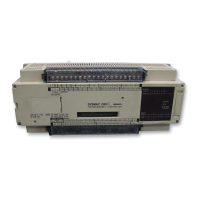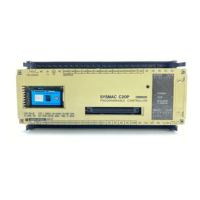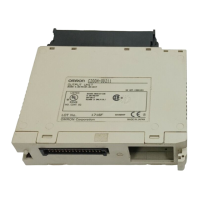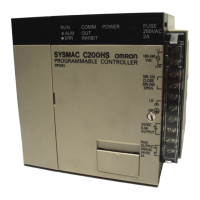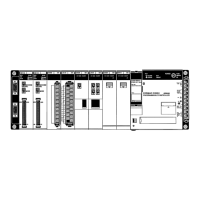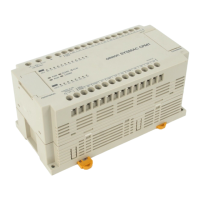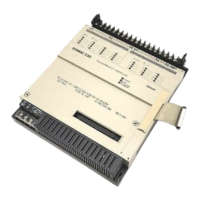57
Likewise, if there is a danger of leakage current causing a transistor or triac
to malfunction, connect a bleeder resistor as shown below. Determine the
resistance of the bleeder resistor by the following equation.
Transistor
Triac
24 VDC
100 VAC
200 VAC
0.1 mA
2.0 mA
5.0 mA
R < Von/I
Von = ON voltage of the load (V)
I = leakage current (mA)
R = bleeder resistance (kW)
L
Load power supply
OUT
COM
Bleeder resistor
When connecting the resistor or triac output to a device (such as an incan-
descent lamp) which allows a high inrush current to flow, care must be taken
to ensure the safety of the transistor or triac. The transistors and triacs are
able to withstand an inrush current of ten times the rated current. If the actual
inrush current will exceed that amount, use one of the following two circuits
to reduce it.
This circuit allows a slight current
(about 1/3 of the rated current) to
flow through the load (i.e., the
lamp), thus eliminating any initial
surge of current.
This circuit acts directly on the
inrush current to limit it, but also
reduces the voltage across the
load.
L
+
OUT
COM
L
+
OUT
COM
When connecting TTL circuits to transistor outputs, it is necessary (because
of the transistor’s residual voltage) to connect a pull-up resistor and a CMOS
IC between the two.
Prevention of Output
Leakage Current
Precautions for Inrush
Current
Transistor Output Residual
Voltage
Preventive Measures Section 3-4

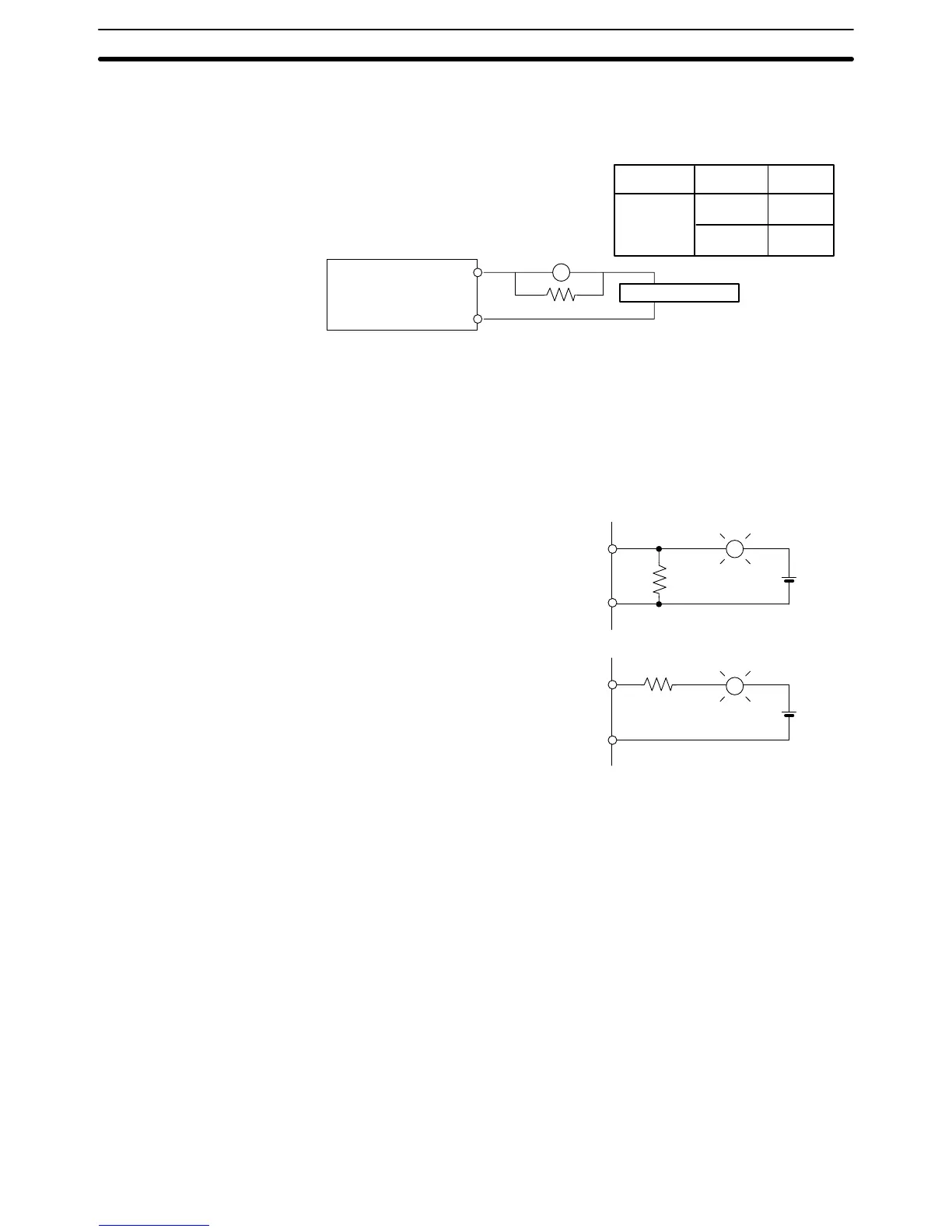